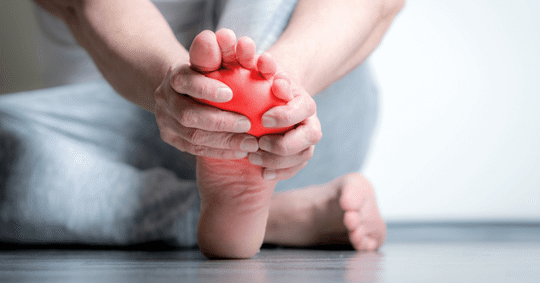Podiatrists, like all other medical professionals, owe their patients care that meets or exceeds acceptable standards within the medical industry. Unfortunately, like all medical professionals, podiatrists can and do make serious mistakes that should have been preventable, often resulting in patient injury. When podiatry malpractice occurs, questions of how it happened and what can be done to make sure it doesn’t happen again arise. To answer these questions, a look at data regarding podiatry malpractice could be a good starting point.
Podiatric Surgery Malpractice Study
In 2020, a group of researchers published a study for the National Library of Medicine regarding podiatry malpractice with a focus on podiatric surgery errors. Although podiatric malpractice can take many forms and cause various types of harm to a patient, surgery errors are typically the most severe and life-changing, which is why this specific type took the research group’s attention. Dozens of reported podiatric surgery malpractice reports issued between 2004 and 2017 were studied and compared to general podiatric surgery metrics. The findings brought reasons for concern.
According to the published research about podiatric surgery malpractice:
- 76.4% of podiatric surgery errors are committed by podiatry surgeons; 15.3% of such errors are committed by orthopedic surgeons; the remaining 8.3% of such errors are committed by general surgeons and emergency room surgeons.
- 94.5% of podiatric surgery errors occur during elective procedures, rather than medically necessary procedures.
- 41.8% of podiatric surgery errors caused the patient to experience persistent or long-term pain.
- 27.3% of podiatric surgery errors resulted in foot deformation, potentially leading to physical disabilities like the need to use a walker or another mobility assistance device.
- Orthopedic surgeons who completed podiatric surgery in urgent cases were noticeably more likely to make a mistake than podiatric surgeons in urgent cases.
What Can Be Learned from the Data?
Using just the data provided by the researchers, useful conclusions can be reached to potentially reduce the risk of podiatric malpractice in the future by learning from mistakes and making careful decisions.
Important lessons that can be learned from the podiatry malpractice study include:
- Prioritize podiatrists: One of the most prominent pieces of information gained through the research is that podiatrists commit more errors than orthopedic surgeons, but that seems to be due to the fact that podiatrists are far more likely to conduct foot surgery than orthopedic surgeons. Furthermore, orthopedic surgeons are more likely to make mistakes in urgent cases than podiatric surgeons. The conclusion that can be reached is that when given a choice between a podiatric surgeon and an orthopedic surgeon for foot surgery, the average patient will benefit from choosing the podiatrist.
- Get second opinions: The vast majority of serious podiatric surgery errors occurred during elective procedures, which means that those procedures could have been avoided entirely by the patients undergoing them. The lesson to pick up from this point is that second opinions are incredibly valuable. It’s unclear how many podiatry malpractice events could be avoided each year if a second opinion for an elective procedure is given, and that second opinion advises a different course of treatment.
- Understand long-term risks: Many of the complications that occur in podiatric malpractice are long-term, such as chronic or recurring pain and physical deformations. With the chances of these complications occurring after an error being so high – as much as two in five patients can experience recurring pain at the surgery site – it is crucial that all potential long-term problems and risks with podiatric surgery are clearly disclosed and explained to a patient. If a patient is given full information about the potential risks, which would establish informed consent, then more patients might choose alternative options before considering podiatric surgery.
What to Do If You Suspect Podiatry Malpractice
If you suspect that a bad result from a podiatric treatment was caused by preventable malpractice, it’s important to take specific steps to protect your rights and possibly seek compensation for damages. Additionally, if you take action and speak up, your case can add to the pool of information about such mistakes, so researchers can look for better ways to stop it from happening to others. In this way, you could be helping yourself and countless other podiatry patients if you decide to explore your options after podiatry malpractice causes you to suffer an injury or complication.
If you suspect podiatry malpractice occurred and injured you:
- Document your experience: Write down everything you remember about the treatment process, particularly any instances that raised concern. For example, if you suspect the wrong surgeon (podiatric surgeon compared to orthopedic surgeon) performed the procedure, note down who you expected to perform the surgery and who actually did it.
- Consult a podiatry malpractice lawyer: If a second opinion or medical evidence suggests podiatry malpractice, get in touch with an attorney who focuses on medical malpractice cases. They will be able to guide you through the legal process and advise on whether you have a solid case.
- File a complaint: With your attorney’s guidance, you can file complaints with the right medical boards and regulatory authorities. Next, you can discuss filing a complaint in civil court, such as an injury claim that could allow you to get compensation for your harm and losses.
Brown & Barron has an award-winning team of podiatry malpractice attorneys who proudly represent patients across Maryland. For nearly 140 years of collective practice experience, we’ve been standing up for wrongfully injured patients by handling complex and hard-fought claims and lawsuits. If you think your podiatric treatment or surgery went wrong due to malpractice, call us at (410) 698-1717 and request a free case evaluation.


